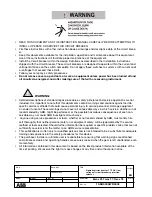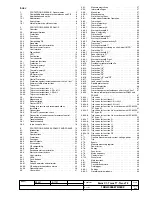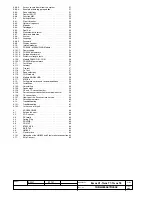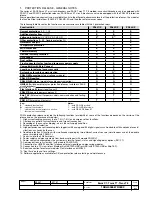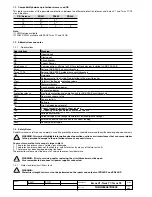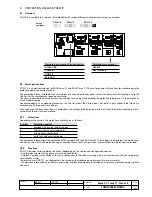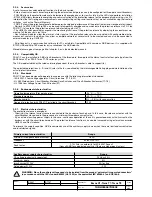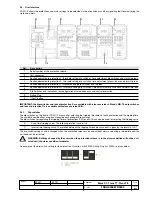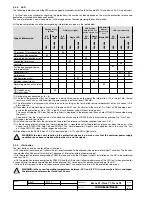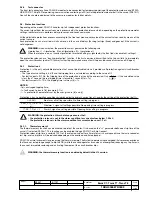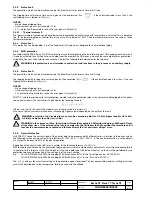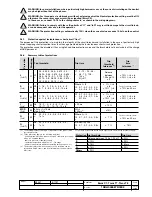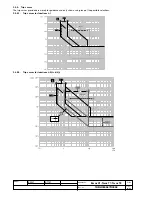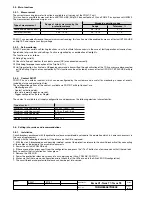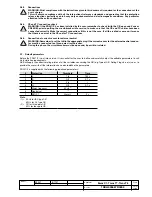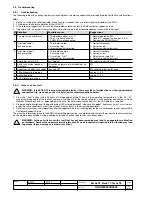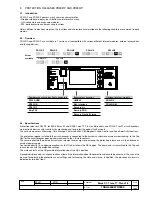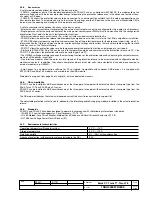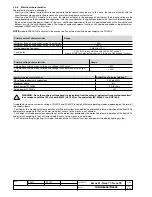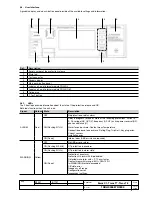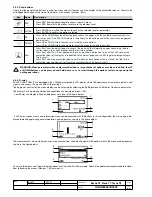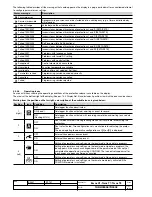
B0431
Emax X1-Tmax T7-Tmax T8
11/66
Doc. No
Model
Apparatus
Scale
Page No
1SDH000587R0002
2.3.4. Test connector
The front test connector allows PR030/B modules to be connected for temporary powering of the protection release, and BT030-
USB, PR010/T, Ekip T&P for powering, communication and testing via PC (or via the protection release itself, in the case of PR010/T).
Consult the chapters dedicated to the accessory modules for further details.
2.4. Protection functions
Depending on the model, PR331/P handles up to 5 independent protection functions.
The current signal from the current sensors is processed by the protection release which, depending on the protection parameter
settings, indicates alarms, performs delay processes and sends commands.
All the adjustable protections process according to the true root mean square value of the current values read by means of the
current sensors.
Each protection has an alarm led, which comes on in the case of delays (flashing) or trips (fixed) and goes out if the current is
not dangerous.
WARNING: when activated, the protections must guarantee the following rule:
I
1
(protection L)
<
I
2
(protection S) and I
2
(protection S)
<
I
3
(protezione I).
When the release is on, an incorrect protection threshold setting is signalled by the front leds (inconsistent settings)
.
The protection release has a “backup-protection” function. If the first command transmitted to the trip coil fails to immediately
open the circuit-breaker (partial TC failure), further trip commands are sent until it opens (absence of current and CB open).
2.4.1. Protection L
Protection L is the only adjustable protection that cannot be disabled since it provides self-protection against circuit-breaker
overloads.
- The type of curve setting is t=k/I2 and the tripping time is calculated according to the value of If:
- For fault currents If
≤
12ln, the tripping time of the protection is given by the expression: t(s)=
. If the calculated value
is less than 1 second, the real tripping time is forced to 1 second (t(s)= 1s.)
- For fault currents If > 12ln, the tripping time is always t(s)= 1s.
NOTES:
- t(s)= envisaged tripping time;
- I
f
= fault current; given in [In] (example: 0.7In)
- I
1
, t
1
= protection L parameters set by the user, given in [In] and [s]
Protection L has 3 operation conditions established by the primary current level I
f
and by the setting of the protection itself I
1
:
I
f
≤
0.9 xI
1
No alarm, all settings possible. No time setting in progress.
0.9 xI
1
< I
f
< (1.05...1.2)
xI
1
Prealarm L signal, all settings possible. No opening time setting in progress.
(1.05...1.2) xI
1
< I
f
Alarm L signal, no setting possible. Opening time setting in progress.
WARNING: the protection L threshold range ensures that:
- the protection release is not in the alarm condition for current values below 1.05 xI
1
;
- the protection release is in the alarm condition for current values over 1.2 xI
1.
2.4.1.1. Thermal memory L
The thermal memory function can be enabled to protect the cables. It is based on the “
τ
L” parameter defined as trip time of the
curve (t1) selected @1.25xI1. This function can be enabled through PR010/T, or Ekip Connect.
Protection release trip time is certainly 100% of the selected value after a time interval
τ
L has elapsed since the last overload or
last trip, or else trip time will be reduced depending on the overload and time elapsed.
PR331/P has two instruments for processing the thermal memory. The first only operates when energized (it also records overloads
that have not lasted long enough to trip the CB), while the second operates even when not energized, reducing any trip times in
the case of immediate reclosing and activating the moment the circuit-breaker trips.
WARNING: t
he thermal memory function is enabled by default in the UL version.
B1751


